How to grow bell peppers in a greenhouse and speed up fruit ripening?
Growing peppers in a greenhouse allows you to speed up the ripening of the fruit and harvest a good harvest. Due to the fact that bell peppers grow well only in warmth, in some regions it is not possible to get even the fruits of technical ripeness outdoors in the open field. A greenhouse made of polycarbonate or other material is an opportunity to get ripe fruits of sweet pepper in the Moscow region, Leningrad region, the Urals, Siberia and other regions with cold rainy summers.
Benefits of growing peppers in a greenhouse
Growing bell peppers in a greenhouse gives many advantages:
- the possibility of early planting of seedlings, which leads to the rapid setting of fruits;
- a stable microclimate can be maintained in the greenhouse - there are often sudden changes in temperature outdoors, and this is detrimental to sweet peppers;
- plants are protected from cold winds, rain and unwanted dew, so pepper diseases are rare;
- indoor plant care is minimal.
The plants in the greenhouse are protected from all natural disasters, and the further yield of sweet pepper depends on how competently it is taken care of.
Greenhouses made from polycarbonate are preferred over greenhouses made from other materials. Sunlight penetrating the double material is diffused, does not cause burns on bell pepper leaves. In addition, the air temperature in the polycarbonate greenhouse does not rise too high in the heat, and the illumination is uniform throughout the entire area.
Tips for installing a polycarbonate greenhouse:
- the shape is preferable to a semicircular (arched) - in winter, a thick layer of snow does not linger on it;
- to ensure strength and long service life, fastening polycarbonate sheets to the frame must be carried out in accordance with the manufacturer's recommendations.
The technical characteristics of cellular polycarbonate prevent hail damage to the greenhouse.
The timing of planting pepper in the greenhouse
The cultivation of peppers in the greenhouse is carried out by the seedling method. You can plant seedlings that are 60 to 70 days old. Each seedling must have at least 10 leaves.
The time for planting seedlings is mid-May, but it will be correct to orientate according to the stable air temperature in the greenhouse. When the thermometer in the greenhouse stops dropping below 10-12 °, it's time to plant the bell pepper.
If in warm regions the greenhouse warms up already at the end of April or at the beginning of May, then in colder regions - in Leningrad, the Urals and other regions - this can drag on until the end of May or early June.
The way out in this case is to create warm beds in the greenhouse. They are prepared in the fall. The top layer of soil is removed to a depth of 20-30 cm. Plant material is laid on the bottom of the beds - small branches, straw, fallen leaves, humus. Top covered with fertile soil. The beds are watered with water to start the process of decomposition of plant residues.
In winter, it is necessary to throw snow on the beds. In the spring, when the air in the greenhouse warms up, the snow will begin to melt. This will moisten the soil, watering it before planting seedlings is not required.
Planting scheme for pepper in a greenhouse
The planting scheme for sweet peppers is chosen depending on the variety and method of the intended cultivation: in one or more trunks.
Space in the greenhouse is limited, so it will be correct to choose tall ones bell pepper varieties... They are grown in two or three trunks, the growth of additional shoots inhibits pinching.The distance between such plants should be at least 40 cm.
Low-growing peppers grown in two trunks can be planted closer to each other - 25-30 cm between them.
So that caring for plants is not easy, the distance between the beds should not be small. Optimally - 70-80 cm, and the planting scheme is selected at will.
The planting pattern may be limited by the size of the greenhouse. If it is small, then along the walls it will be correct to make narrow beds and plant seedlings in one line or in a checkerboard pattern. In the center of the greenhouse, a wide bed is preferable, and the planting pattern is two-row.
Planting seedlings in a greenhouse
Before planting bell peppers in a greenhouse, it must be accustomed to the bright sun. A week before planting, boxes with seedlings begin to be exposed to the sun. Do it gradually. The first sun bath should not exceed two hours, each next day the sun exposure time increases by 2.5 hours.
Planting peppers in a greenhouse is carried out on a cloudy day or in the evening. The day before transplanting, the seedling pots must be spilled with water. Transplant should be done carefully, trying not to damage the clod of earth. Bell pepper does not always withstand root damage, it takes a long time to recover.
The transplanted plants are not watered for the first three days.
Important!
Pepper seedlings should be planted in the soil to the same depth as they grew in the seedling box. You cannot deepen them.
Greenhouse Pepper Care
Pepper care in the greenhouse is simple, but requires a competent approach.
For sweet peppers, it is important:
- bright lighting, because with a lack of light, the fruits are not tied;
- fertile soil - only with sufficient nutrition, even full-fledged fruits are formed;
- fresh air - without ventilation, fungal diseases appear, which are dangerous for the entire planting of peppers.
Drying out of the soil for a long time is unacceptable.
Care should be regular, it includes:
- watering;
- airing;
- loosening;
- shrub formation and pinching;
- top dressing;
- detection of disease at an early stage and fighting it.
Watering is best done in the morning, so that the moisture evaporates in the evening. Water only at the root, using a watering can, a hose or drip irrigation. When watering with a hose, do not use a strong jet of water, which can erode the soil and expose the roots.
Important!
Watering is recommended with warm water. When watering with cold water plant growth stops, the fruits are not formed, and the ovaries crumble.
Peppers do not require frequent watering - just water once every five days. In the heat, planting in the greenhouse can be watered additionally.
Some time after watering, the soil must be loosened. The roots breathe, loosening them prevents rotting. It can be easier to maintain if the loosening is replaced mulching... In addition, mulch will keep the soil from overheating.
Airing is carried out to maintain a stable temperature inside the greenhouse and to prevent fungal diseases. Humid air contributes to the rapid development of the disease. In addition to airing, removing excess foliage and pinching provide fresh air to the plants.
Plant nutrition in the greenhouse is as important as it is for peppers grown outdoors. Feeding with infusion of organic fertilizers is preferable. It is held once every two to three weeks.
Top dressing with mineral fertilizers is carried out in the second half of the summer. To increase the mass of fruits and ripeness, fertilization should be complex.
Care also consists of tying up shoots... Pepper shoots are very brittle, they break under the weight of the fruit. As a support, you can use stakes (one for each bush), or a trellis installed on the entire garden.
Grassing and removing excess foliage
Such care for peppers as pinching remains controversial for many. But for plants in a greenhouse, pinching has more advantages than disadvantages:
- thinning plantings provides access to air and light;
- with a large number of shoots on one plant, the fruits do not have enough nutrition, they grow poorly, become deformed, and many ovaries fall off.
When growing peppers in the open field at a great distance from each other, pinching can be omitted, but this must be done in a limited space.
Removing weak shoots will direct nutrition and moisture to the growth of large, high-quality fruits, provide the peppers with access to the sun, which is necessary for ripening. Thinning the crown will save plants from many diseases.
When the plant reaches a height of 25-30 cm, pinch its top. This gives impetus to the growth of side shoots. When the shoots grow 10-15 cm, they begin to pinch. All side shoots below 20 cm are removed. Of the rest, 2-3 of the strongest are left. Those that are directed into the crown, do not have ovaries, are underdeveloped - they break out. In addition, foliage is removed, which is located below the branching of the shoots.
Important!
The first formed fruit is removed. If left alone, it will grow large, but will retard the growth of other peppers because it will take up the bulk of the food.
Patching is carried out in stages, at one time they remove part of the shoots that thicken the crown, after a few days they break out the weak ones, and later break off the foliage. This will help the plant avoid shock.
Grazing of low-growing varieties can be omitted, but at the same time it is necessary to increase the distance between plants during planting or to carry out additional feeding.
Output
For heat-loving peppers, growing in a greenhouse is preferable to growing outdoors. Only in greenhouse conditions can a suitable microclimate be created in which many fruits are set.
But in order for the fruit to form full-fledged, reach biological maturity and correspond to the declared qualities of the variety, competent and regular care is required.

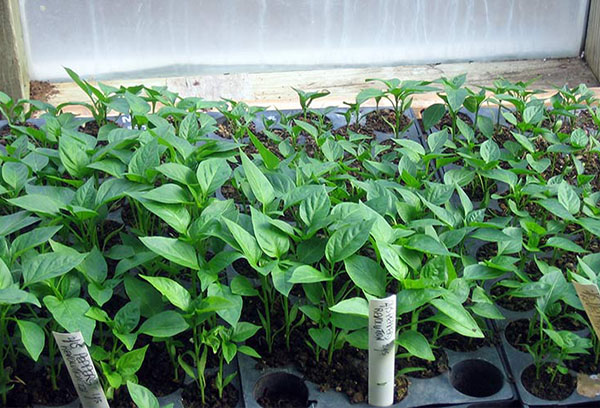
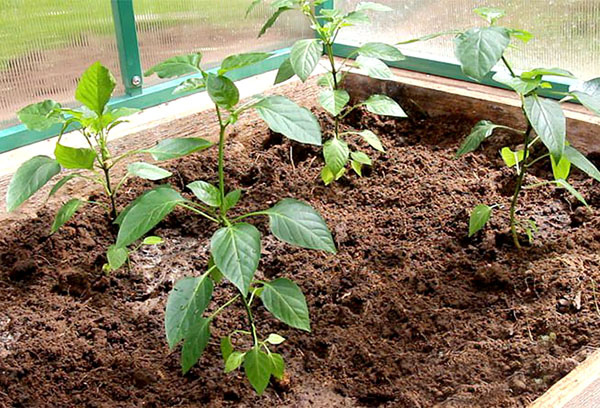
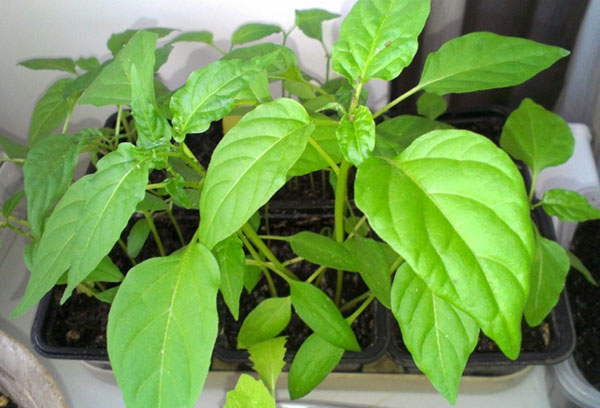
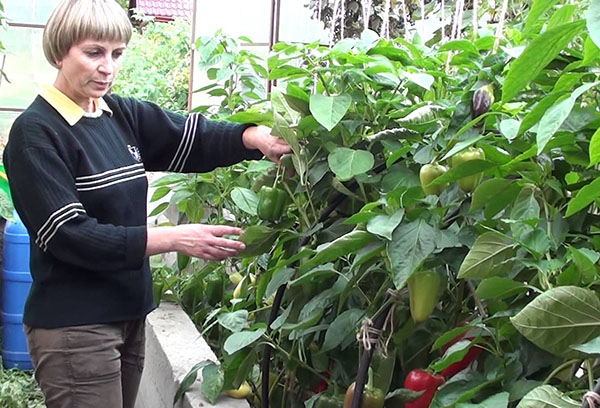

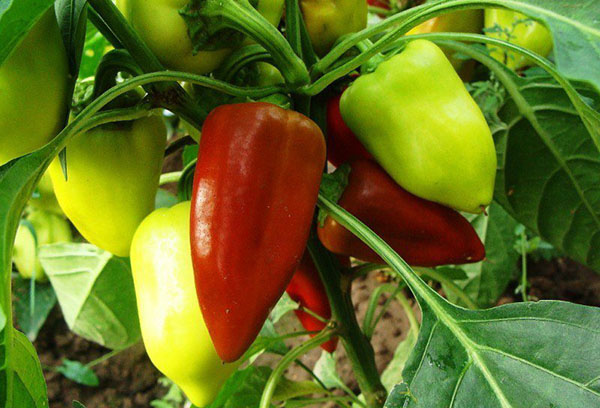
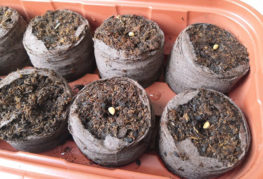


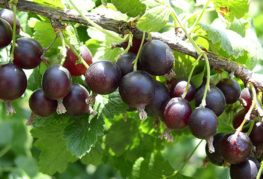

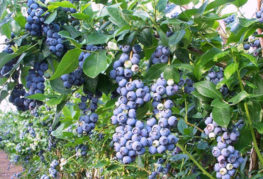
and will be published shortly.